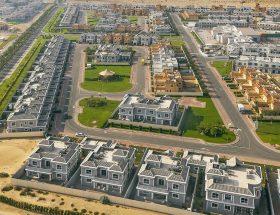Innovation in construction techniques continues to alter the industry, offering new methods to improve efficiency, sustainability, and safety. Embracing these innovative approaches can lead to faster project delivery, cost savings, and improved environmental stewardship. Explore here innovative construction techniques from the best Saudi Arabia construction companies to consider:
Modular construction:
Modular construction involves assembling building components off-site in a controlled factory environment, then transporting them to the construction site for assembly. This approach reduces construction time significantly compared to traditional methods, as multiple modules can be fabricated simultaneously. Modular construction also improves quality control, as components are fabricated under strict factory conditions.
Building information modeling (BIM):
Building information modeling (BIM) is a digital modeling technique that allows architects, engineers, and construction professionals to collaborate on a single, coherent platform. BIM integrates 3D modeling with data-rich information about building components, materials, and systems. This technology facilitates better design visualization, clash detection, and coordination among project stakeholders. It also improves project efficiency by identifying conflicts early in the design phase, reducing rework and improving construction accuracy.
Prefabrication and preassembly:
Prefabrication and preassembly involve constructing building elements, such as walls, floors, and roofs, off-site before transporting them to the construction site for installation. This technique streamlines on-site construction activities, minimizes labor requirements, and accelerates project timelines. Prefabricated components are manufactured to precise specifications, ensuring consistency and quality control. Prefabrication also allows for greater flexibility in design and customization while reducing material waste and environmental impact.
Green building materials:
Incorporating green building materials is a sustainable construction technique that promotes environmental responsibility and energy efficiency. Examples include recycled concrete, engineered wood products, sustainable insulation materials, and energy-efficient glazing systems. These materials reduce the project’s carbon footprint, improve indoor air quality, and lower operational costs over the building’s lifecycle. Innovative advancements in green building materials continue to expand options for environmentally conscious construction practices.
Robotics and automation:
Robotics and automation technologies are reforming construction by automating repetitive tasks and improving productivity. Robots can perform tasks such as bricklaying, concrete pouring, and site surveying with precision and efficiency. Automated machinery, such as 3D printers, can construct entire buildings using concrete or composite materials, significantly reducing construction time and labor costs.








